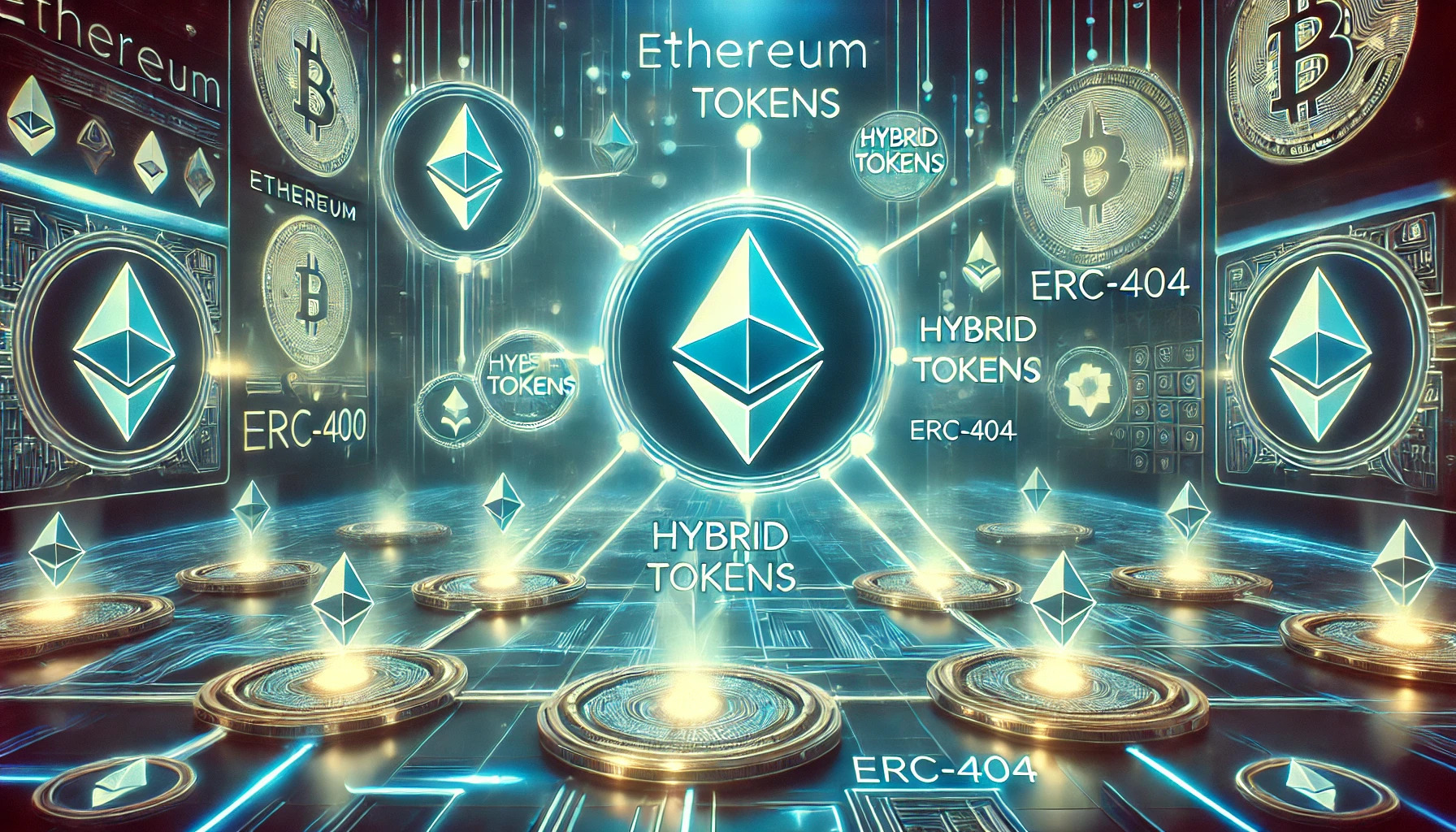Introduction
The ERC-404 token standard is one of the most exciting developments in Ethereum token standards, pushing the boundaries of fungible tokens and NFT integration. Unlike traditional token models such as ERC-20 (fungible) and ERC-721 (non-fungible), ERC-404 blends elements of both, allowing assets to have fractional ownership, liquidity, and unique properties within the same contract.
In this article, we’ll explore what makes ERC-404 unique, how it differs from existing standards, and why it’s gaining traction in DeFi, GameFi, and the broader Web3 ecosystem.
Understanding ERC-404: A Hybrid Token Model
The key feature that makes ERC-404 unique is its hybrid nature—it allows tokens to function as both fungible assets (like ERC-20s) and NFTs (like ERC-721s).
Key Innovations of ERC-404:
✅ Fractionalized NFT Trading – Enables NFTs to be broken into fungible pieces, increasing liquidity.
✅ Dynamic Asset Behavior – Allows NFT-like tokens to be traded, transferred, and combined like standard tokens.
✅ Programmable Ownership – Supports partial ownership, unlocking new use cases in DeFi, gaming, and digital identity.
✅ Seamless NFT & DeFi Integration – Bridges DeFi applications with NFT marketplaces.
This flexibility allows developers to rethink how digital assets function, creating new financial models, token economies, and interactive experiences in Web3.
How ERC-404 Differs from ERC-20 and ERC-721
| Feature | ERC-20 | ERC-721 | ERC-404 |
|---|---|---|---|
| Fungibility | Fully fungible | Non-fungible (unique assets) | Hybrid (both fungible & NFT-like) |
| NFT Compatibility | None | Yes | Yes |
| Use Cases | DeFi, governance, payments | Collectibles, gaming, digital art | DeFi, fractional NFTs, tokenized gaming |
| Liquidity | High | Low (NFTs are unique, not easily traded) | Higher (NFTs with ERC-20-like liquidity) |
| Smart Contract Complexity | Standard, widely adopted | Unique per NFT | Experimental, evolving technology |
The main advantage of ERC-404 is that it merges fungibility and uniqueness, creating a new category of digital assets that can exist in both DeFi and NFT ecosystems.
Use Cases: Why ERC-404 is a Game-Changer
ERC-404 opens up entirely new possibilities across multiple industries:
Fractionalized NFTs & Asset Ownership
One of the biggest challenges in the NFT space is liquidity—most NFTs are illiquid assets that require buyers to purchase the entire NFT.
With ERC-404, NFTs can be fractionally owned and traded, allowing users to buy and sell shares of high-value NFTs.
DeFi & Yield Farming with NFTs
ERC-404 introduces new DeFi mechanics, where users can stake NFT-backed tokens, trade NFT fragments, or use NFTs as collateral.
- Imagine yield-generating NFTs that distribute earnings to fractional owners.
- NFT-based liquidity pools where each participant holds a tradeable stake in the underlying NFT.
GameFi & In-Game Economies
For Web3 gaming, ERC-404 could revolutionize in-game assets by allowing items to be both collectable (NFTs) and tradeable (fungible tokens).
- Players could own unique weapons, characters, or skins while maintaining real-time liquidity for these assets.
- In-game tokens could dynamically switch between fungible and non-fungible states, making asset trading more seamless.
Digital Identity & Tokenized Memberships
ERC-404 could enable dynamic digital identities—where memberships, access passes, and credentials exist as both tradeable tokens and unique NFT-like assets.
For example, a VIP membership token could be partially sold, or access to a premium DeFi platform could be distributed across multiple token holders.
Challenges & Limitations of ERC-404
Despite its innovative design, ERC-404 is still experimental, and developers are working to refine its security, scalability, and adoption.
Smart Contract Complexity
ERC-404 contracts are more complex than ERC-20 or ERC-721, which means higher gas fees and greater risks of smart contract vulnerabilities.
Adoption & Ecosystem Support
Since ERC-404 is not yet an official Ethereum standard, it lacks widespread exchange and wallet support. However, projects like Pandora are already showcasing its potential.
Regulatory Considerations
The concept of fractionalized NFTs may introduce new legal questions around asset ownership, security classifications, and compliance.
Final Thoughts: Why ERC-404 Matters
ERC-404 represents a breakthrough in Ethereum token standards, offering a flexible, hybrid approach that combines the best of ERC-20 and ERC-721.
By allowing NFT integration with fungible token liquidity, ERC-404 has the potential to reshape DeFi, gaming, and digital ownership models.
While still in its early stages, ERC-404 is one of the most exciting experiments in Web3 technology, paving the way for new financial models, tokenized economies, and innovative asset interactions.
At Top ERC 404, we’re committed to tracking its evolution and keeping you informed on the latest developments, projects, and use cases in this emerging space.

Leave a Reply